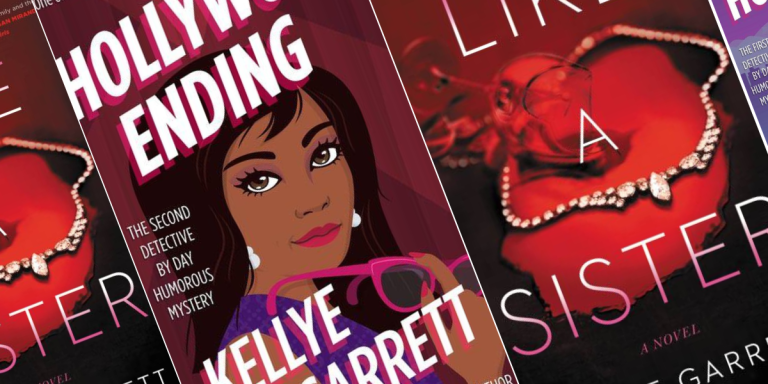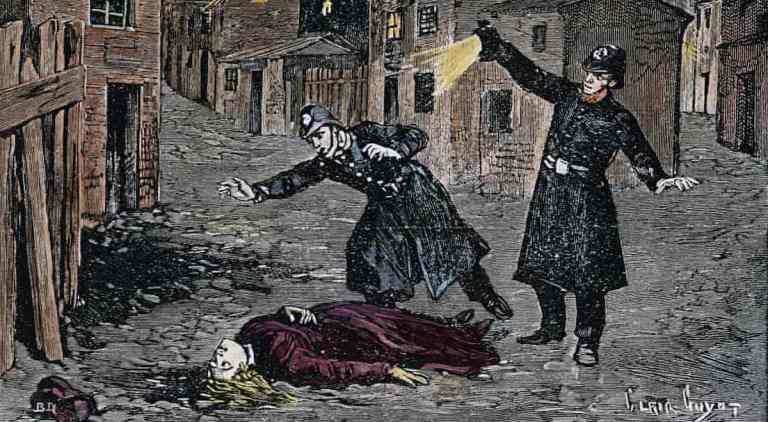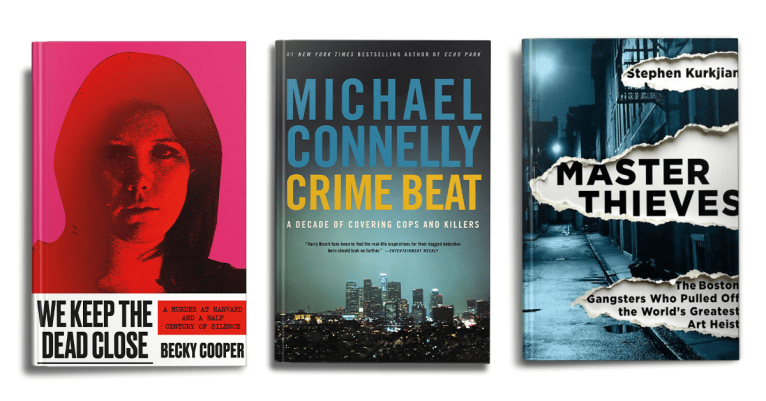Interview With The Mindhunter: The Killer’s Shadow by John Douglas
 NS: Going to start with a bit of a cliche, but we’re all curious to know: What was it like sitting across the table from some of the most notorious criminals in American history?
NS: Going to start with a bit of a cliche, but we’re all curious to know: What was it like sitting across the table from some of the most notorious criminals in American history?
JD: There is kind of a schizophrenic aspect to the encounter. On the one hand, before you go in, you’ve studied their cases, the crime scenes and the victimology so thoroughly that you are angry and revolted by what this person has done. In the case of sadistic serial killers or those who’ve harmed children, you really can feel as if you’re in the presence of true evil. On the other hand, you are there to learn and get answers, so you want to control your emotions and be as analytical as possible. And to do that, you have to develop a rapport with the subject so you’re both speaking on the same level. What I want to do is take the subject back in his mind to when he actually conceived of and committed the crime, and then what he did and felt afterward, so I can correlate what he was thinking and feeling, and how he was reacting emotionally, to the evidence left at the crime scene. That’s how we advance the discipline of behavioral profiling and criminal investigative analysis.
NS: How did you get started as a criminal profiler?
JD: It was kind of by accident. After assignments as a street agent in Detroit and Milwaukee, I was assigned to the FBI Academy in Quantico, and before long I was the youngest instructor in the Behavioral Science Section, teaching Criminal Psychology both to new agents and FBI fellows, who were generally experienced mid-career detectives, police department executives and sheriffs. I felt totally intimidated lecturing to some of these people who had a lot more experience in the field than I did. Sometimes they’d even worked the cases we were teaching. So when my fellow instructor Robert Ressler and I were sent out to do “road schools,” where we’d spend a week teaching at one department and then the next week move on to another department, I figured why not see if we could actually learn from the experts. That meant using our FBI credentials to go into the penitentiaries near where we were teaching and see if we could interview the incarcerated serial killers and violent predators. It was a lot easier to get in those days; not as many rules or as much protocol, so we just did it. Surprisingly, almost every criminal we approached was willing to talk to us. Some, like Edmund Kemper, the Santa Cruz, California Co-ed Killer, we got a lot of information and insight from. Others, like Ed Gein, the model for both Norman Bates in Psycho and Buffalo Bill in The Silence of the Lambs, were so far gone into their own mental illness that we got very little from. But the effort, and a formal funded study we did as a result with Dr. Ann Burgess, laid the foundations for the modern profiling program, of which I was the first full-time operational profiler, and the Crime Classification Manual, of which I, along with Bob Ressler and Ann Burgess, was one of the authors.
NS: From the portrayal of Special Agent Jack Crawford in Silence of the Lambs to Holden Ford in Netflix’s Mindhunter, you have been the inspiration behind many characters on the big screen. What is something these portrayals get right about being a FBI agent? What is something they get wrong?
JD: I think in a lot of respects the portrayals are pretty good. I think Holden Ford, especially, captures the sense of intrigue, vulnerability and compulsion to understand that informed our early studies. He also shows the emotional toll these cases and victims can take on you.
As far as what they get wrong, so many of the profilers in novels and in movies and on television are described as having that rare gift—or is it actually a curse?—of being able to get inside the mind of the killer. Well, you’d better have that ability if you’re going to be a profiler or a detective or any other type of criminal investigator; otherwise you’re probably in the wrong business. What we really try to cultivate is the ability to analyze the evidence left at the crime scene, combined with the type of crime, whether it is high-risk or low-risk, whether it is planned or a crime of opportunity, as well as the victimology, to try to figure out what type of individual has committed the crime and what he is likely to do next so that we can help local law enforcement catch him.
NS: What was it like revisiting Joseph Paul Franklin’s case for The Killer’s Shadow?
JD: It’s always interesting revisiting a major case and seeing how you feel about it now, compared to when you were working it. Going back to the Franklin case was pretty intense, though, because he killed so many people, and unlike most serial killers, because he was a racist and anti-Semite, he had the ability to influence others and a mission, which meant he wasn’t going to stop unless we could catch him. Then, years later, when I interviewed him in Marion Federal Penitentiary, along with Special Agent Ken Baker of the Secret Service, I was shaken by how little remorse he had and how proud he was of his “life’s work,” which even involved killing teenagers he’d never even met.
NS: You have a long history of working on many different types of crime cases. How do you pick which cases to write about?
JD: As you say, there have been literally thousands of cases to choose from. When Mark Olshaker and I set out to write a book, we try to focus on cases that are the most interesting from an investigatory standpoint, which have the most interesting characters, the most courageous or heroic victims, and which point to a larger theme or message in the human condition, because that, we think, is the real reason people want to read about this type of thing. They want to know why people do the things they do. In the case of Joseph Paul Franklin, the subject is unfortunately extremely relevant because of all the hate, divisiveness and racist feeling and activity so evident these days, not only in the United States but in many countries around the world. We can see Franklin’s spiritual children in Dylan Roof and the marchers in Charlottesville, for example, who chanted, “Jews will not replace us!” and “Blood and soil!,” a standard Nazi phrase. With The Killer’s Shadow, we really wanted to shine a light on what these people are really like, and how we have to take an active moral stand if we want to defeat them.
NS: What do you think of the increasing interest in true crime and the growing popularity of ‘internet detectives’ such as Michelle McNamara who is known for her hunt of the infamous Golden State Killer?
JD: We think the interest in true crime will always be there for reasons I’ve given above, having to do with the basics of the human condition, writ large, as well as the fascinating characters, the tragedy and triumph inherent in the stories, the never-ending quest justice and the intrigue of mysteries. I think the availability of so much information from so many sources on the Internet has only fueled this phenomenon and created more amateur sleuths. This can be a good thing or a bad thing. Michelle McNamara certainly did excellent and perceptive work, which we can all applaud. On the other hand, there are a lot of misguided amateurs and trolls out there who have done a lot of damage to innocent people, like John and Patricia Ramsey, the West Memphis Three, and Amanda Knox, all of whose cases we’ve investigated, written about and did our best to defend and exonerate.
NS: In an interview, Joseph Paul Franklin attributes his radicalization to reading nazi literature such as Mein Kampf. Today there is an increasing worry that people are being radicalized through media and the internet. What lessons do you think we as a country should take away from cases like Franklin’s?
JD: What Franklin said was true, but it’s not that simple. This was a young man raised in terrible circumstances and poverty by abusive parents, he was several injured as a child and negligence of that injury cost him most of the sight in one eye. He was angry and resentful and grew up in an atmosphere of hate and bigotry in the 1950s South. He was certainly inspired by Hitler and Nazi literature, but it could have been any kind of hate material or finding someone else to blame for your own inadequacies and troubles. The media and Internet have made it even easier to obtain this material and this influence. We would submit to you that there is not a single Q-Anon adherent or extreme right-wing or left-wing radical who is not trying to compensate for deep-seated feelings of personal inadequacy, combined with resentment for what they feel they are entitled to and not getting. Bigotry is based on having to find someone else to blame for your troubles and feeling better about yourself by identifying someone “lower” than yourself. This is the lesson of Joseph Paul Franklin and all the extremists and potential homegrown terrorists who admire him and his kind. In The Killer’s Shadow, we are warning that we must always be vigilant against these types.
NS: Are there aspects of this case—21and any other case that you’ve covered in your past titles—that are difficult to convey in your writing?
JD: Writing is always difficult, getting the setting, emotion and what happened just right. The main challenge for us, other than the voluminous amount of research we do on each case along with our researcher Ann Hennigan, is to try to convey it to the reader to the extent possible that she or he can experience it as I did.
NS: Are there any new projects you’re working on?
JD: Mark and I are working on a book about one of the most emotional and heart-rending cases I ever worked on: the abduction and murder of a 17-year-old young woman and a nine-year-old girl in Columbia, South Carolina in 1985. In what turned out to be the successful capture of a man who was just starting out his career as a vicious serial killer, I employed a tactic which I felt would work but was one of the most difficult decisions I have ever had to make: using (with her and her parents’ consent) the older sister of one of the victims as “bait” to catch the killer.
Order Now
The legendary FBI criminal profiler and international bestselling author of Mindhunter and The Killer Across the Table returns with this timely, relevant book that goes to the heart of extremism and domestic terrorism, examining in-depth his chilling pursuit of, and eventual prison confrontation with Joseph Paul Franklin, a White Nationalist serial killer and one of the most disturbing psychopaths he has ever encountered.
By clicking 'Sign Up,' I acknowledge that I have read and agree to Hachette Book Group’s Privacy Policy and Terms of Use





